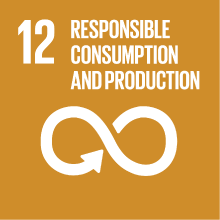MICROSCOPY AND STRUCTURAL CHARACTERIZATION TECHNIQUES - THEORY
- Academic year
- 2025/2026 Syllabus of previous years
- Official course title
- MICROSCOPY AND STRUCTURAL CHARACTERIZATION TECHNIQUES - THEORY
- Course code
- CM1408 (AF:578036 AR:324756)
- Modality
- On campus classes
- ECTS credits
- 9
- Degree level
- Master's Degree Programme (DM270)
- Educational sector code
- CHIM/02
- Period
- 2nd Semester
- Course year
- 1
- Where
- VENEZIA
Contribution of the course to the overall degree programme goals
that describes some of the common approaches to characterise materials.
The aim of the course is to give the basic of crystallography and diffraction as a tool to characterize solid state materials.
Learning objectives involve understanding of basic principles of crystallography, X-ray diffraction, developing an understanding of electron microscopy principles, and applying these principles to master the
underlying concepts of image interpretation. and to master the underlying concepts of structural characterisation.
The basic principle of symmetries in solids will be outlined and developed in order to have a quantitative tool in the characterisation of materials. These knowledges will be then used to interpret the X-ray diffraction data. The basic principle of electron microscopy will be outlined and developed in order to understand the characteristic and properties of these modern instruments used in the characterisation of nanostructured materials. The course will start from the basic principle of geometrical optics and then the new knowledge necessary to understand the functioning of an electron microscope will be built step by step. At the end of the course the students will be able to interpret an electron microscopy image and to obtain from it the atomic and structural-morphological properties of interest.At the end of the course the students will be able to identify crystalline phases present in any kind of material, to determine the mean particle size, o understand the structural modifications due, for example, to doping.
Expected learning outcomes
1. to learn the main methods used in crystallography;
2. to learn the standard methods used in X-ray diffractionand in electron microscopy to study materials and specially nano-structured systems;
Linking material learned in class to modern structural characterisation techniques and research will be highlighted to
give you opportunities to see how X-ray diffraction and electron microscopy are solving current, real-world problems.
Pre-requirements
experience with calculus. In addition, students should be familiar with the concepts learned in calculus-based physics.
Contents
Interaction X-photon-matter, Instrumentation, diffraction techniques:single crystal and powder methods.
Application of X-ray diffraction in the study of hard and soft matters: Scherrer equation, Rietveld method.
The Human eye: how it works and its limitation
geometrical optics: thin lens equation, lens aberration, lens systems;
Light-optic Microscopy;
Electron Optics; properties of a thin magnetic lens, defect of electron lenses;
Electron gun: thermoionic and field emission;
Kinematic of scattering by an atomic nucleus; electron-electron scattering; the dynamic of scattering;
Transmission electron microscopy: types of contrast: scattering contrast, diffraction contrast. Electron diffraction; bright field and dark field images; phase contrast. High resolution TEM. TEM specimen preparation.
Scanning electron microscopy: operating principles, secondary electrons, backscattered electrons. The environmental SEM; SEM specimen preparation.
Analytical electron microscopy.
Referral texts
Marc De Graef, Michael McHenry, Structure of Materials, Cambridge University Press, 2012.
Pecharsky Vitalij, Zavalij Peter, Fundamentals of Powder Diffraction and Structural Characterization of Materials,Springer. Berlin, 2008.
Fultz Brent, Howe James, Transmission Electron Microscopy and Diffractometry of Materials, Springer 4th edition 2013.
Ray F. Egerton Physical Principles of Electron Microscopy An Introduction to TEM, SEM, and AEM, Springer Nature , 2nd edition, 2016
David B. Williams, C. Barry Carter, Springer; 2nd edition (2009).Transmission Electron Microscopy: A Textbook for Materials Science.
Assessment methods
The students will be asked to solve some numerical exercises related to the arguments explained during lessons. Furthermore the students will be asked to answer some theoretical questions about topics developed during classes.
Type of exam
Grading scale
Teaching methods
Teaching language
Further information
Enrolling for the examination is allowed only to students that attended at least 80% of classes.
Accessibility, Disability and Inclusion
Accommodation and support services for students with disabilities and students with specific learning impairments:
Ca’ Foscari abides by Italian Law (Law 17/1999; Law 170/2010) regarding supportservices and accommodation available to students with disabilities. This includes students with mobility, visual, hearing and other disabilities (Law 17/1999), and specific learning impairments (Law 170/2010). In the case of disability or impairment that requires accommodations (i.e., alternate testing, readers, note takers or interpreters) please contact the Disability and Accessibility Offices in Student Services: disabilita@unive.it.
2030 Agenda for Sustainable Development Goals
This subject deals with topics related to the macro-area "Circular economy, innovation, work" and contributes to the achievement of one or more goals of U. N. Agenda for Sustainable Development


